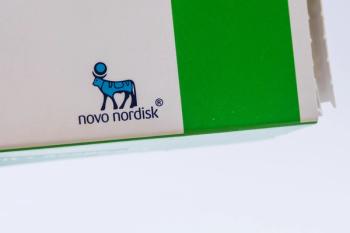
Challenges Persist for Pharmacies Filling Buprenorphine Prescriptions
Pharmacies face significant challenges in filling buprenorphine prescriptions for telemedicine patients, impacting opioid use disorder treatment access and patient satisfaction.
For patients receiving telemedicine treatment for opioid use disorder (OUD), there were challenges for pharmacies to fill buprenorphine prescriptions, leading to concerns of periods where patients were untreated. The authors of a study published in JAMA Network Open said that patients who are untreated are often at an increased risk of returning to nonprescribed opioid use.1
“Challenges filling buprenorphine prescriptions were prevalent among individuals receiving telemedicine treatment for OUD, with approximately one-third missing buprenorphine doses in the last 12 months because of a pharmacy-related barrier,” the study authors said.1
Pharmacies, which are highly accessible due to their prominence in communities, can be places to help patients with OUD. Pharmacist-led opioid deprescribing programs were shown to be safe and effective. In a
As for buprenorphine specifically, community pharmacies can help to improve OUD, but gaps in knowledge can limit engagement in providing the medication. Many of the pharmacists
In the current study, investigators assessed the challenges for pharmacies in filling buprenorphine prescriptions and aimed to determine if there were differences between patients in rural and nonrural areas. In the cross-sectional survey, adults who were receiving telemedicine for OUD from August to September 2024 in Florida, Michigan, New Jersey, Ohio, and Texas were included. There were 601 patients in telemedicine treatment, and they had a mean age of 41.4 years and 60.4% were women. Further, 2.9% were Black, 6.3% were multiracial, and 90.4% were white, according to the study authors. Approximately half of patients were from rural zip codes.1
Investigators found that 31.9% of patients had to go without the medication because they could not get their prescription filled at their pharmacy, with 95 patients in rural areas and 97 patients in nonrural areas. Of those without buprenorphine, 25% reported that the filling issues caused them to have to go a week or more without access. Approximately 54.5% of patients reported that the pharmacy needed to order the drug, with 43 rural patients and 47 nonrural patients. Both rural and nonrural patients had a similar likelihood of experiencing issues related to pharmacist hesitancy in filling a prescription from a telemedicine provider, and insurance barriers were prominent for 14 rural patients and 23 nonrural patients.1
However, 85.5% of patients who had an issue filling their prescription did find a resolution, and nearly 90% of patients were satisfied or very satisfied with filling their telemedicine prescription. A small number of patients used mail order, but 58.6% of patients were interested in mail delivery in the future, but 20% expressed concerns over the reliability of medication shipping.1
“While many respondents reported their challenges filling buprenorphine prescriptions were ultimately resolved at their pharmacy, the presence of pharmacy-level barriers led to delays in buprenorphine access of 3 days or longer for more than 20% of patients,” the study authors said.1 “Various approaches to improving pharmacy operations and expanding access points for buprenorphine could support greater accessibility for patients.”
READ MORE:
Ready to impress your pharmacy colleagues with the latest drug information, industry trends, and patient care tips? Sign up today for our
REFERENCES
1. Hendy LE, Hill LG, Olguin A, et al. Pharmacy Barriers to Receiving Buprenorphine Among Patients Undergoing Telemedicine Addiction Treatment. JAMA Netw Open. 2025;8(8):e2527418. doi:10.1001/jamanetworkopen.2025.27418
2. Nowosielski B. Pharmacist-Led Opioid Deprescribing Safe, Effective. Drug Topics. August 11, 2025. Accessed August 20, 2025. https://www.drugtopics.com/view/pharmacist-led-opioid-deprescribing-safe-effective
3. Meara K. Pharmacy Buprenorphine Programs Can Increase OUD Treatment Access, But Barriers Limit Engagement. Drug Topics. March 18, 2025. Accessed August 20, 2025. https://www.drugtopics.com/view/pharmacy-buprenorphine-programs-can-increase-oud-treatment-access-but-barriers-limit-engagement
Newsletter
Pharmacy practice is always changing. Stay ahead of the curve with the Drug Topics newsletter and get the latest drug information, industry trends, and patient care tips.






































































































































